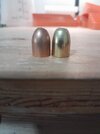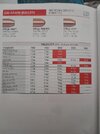The correct answer is... it depends.
I would be more inclined to continue with an established load that incorporates a different component(s) with, for example, Unique, even at max load... which I do. I've been loading the same 6.5grn Unique under any 230grn bullet, with any primer, for 30+ years. I would not be so inclined to do that with a max charge of something like TiteGroup... because of how it works, and how fast it is. A change in primer or bullet... heaven forbid both... could create an overpressure issue very quickly. I think you are likely safe with your choices of powder... that is, Bullseye and HP-38... where you are at, but caution dictates... 5.5grn HP-38 is actually OVER current published data (Hodgdon,) but you are loading them long. If you are loading in volume, like I do, I would back off that charge, say starting at 5.2grn, and work up a short ladder, using your chronograph to validate the velocity.... then go to work. There is nothing worse than loading up a big lot of cartridges, only to find they aren't right.



